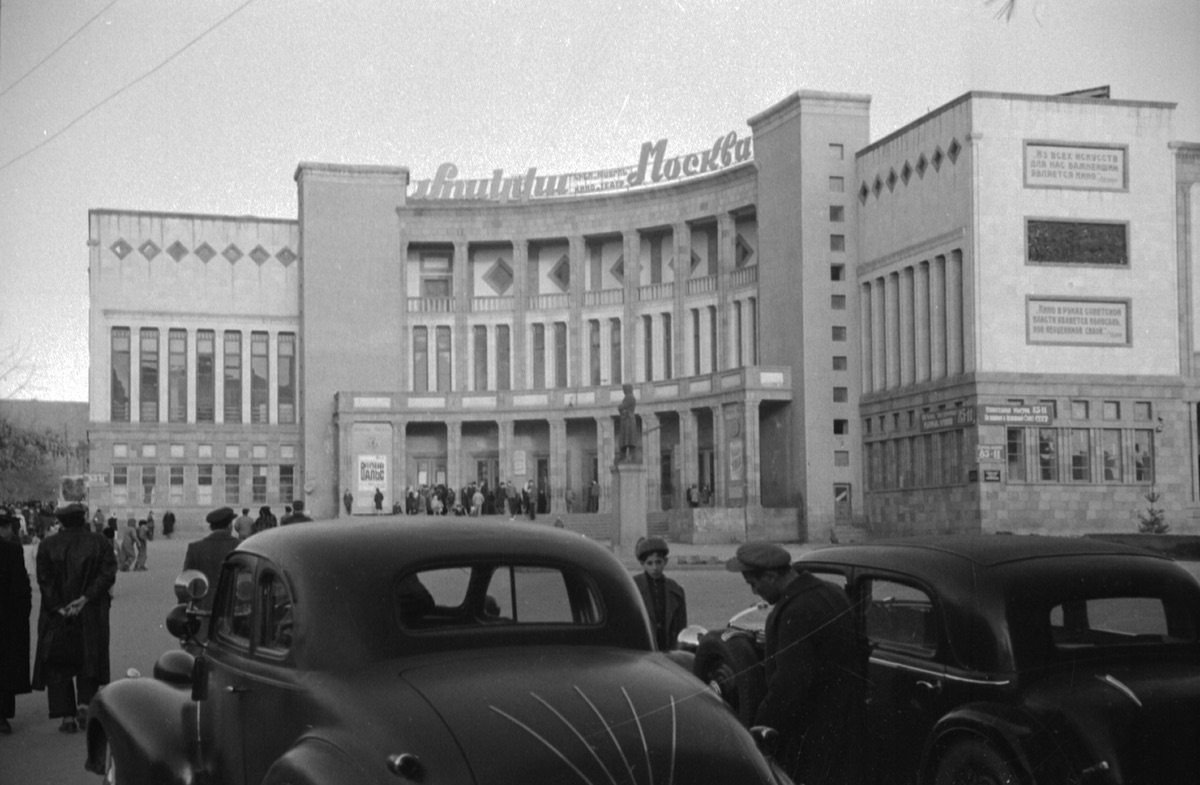The Soviet Union produced countless hilarious comedies — so why have they barely made an impact in the West?
The Soviet Union produced countless hilarious comedies. Yet they barely made an impact in the West, which has often favoured the darker elements of Soviet life. It's time to celebrate the country's brighter side.
Leonid Gaidai, Eldar Ryazanov, Georgiy Daneliya: with 70 films between them, their comedies range from melancholic character portraits to sneaky satires and madcap adventures, creating a gentle but often subversive picture of a country bursting with paradoxes. Yet these three titans of Russian-language comedy are barely known outside of the former Soviet Union.
Austere Soviet dramas may be revered in Western cinephile circles, but the country’s comedies have been almost completely overlooked. The Criterion Collection, for example, includes the forbidding work of Andrei Tarkovsky, Larisa Shepitko, and Aleksei German, but not a single comedy from the same era.
Austere Soviet dramas may be revered in Western cinephile circles, but the country’s comedies have been almost completely overlooked
Even directors who are critically-acclaimed in the West receive praise only for their darker films. Take Elem Klimov. Despite creating a proto-Moonrise Kingdom (2012) in his endlessly inventive, delightfully naive pioneer camp comedy Welcome, or No Trespassing (1956), he is far better known for the grim anti-war epic Come and See (1985) — which has both enjoyed a Criterion release and currently ranks as the second greatest film of all time on Letterboxd. Arguably, the relative success of Come and See over Klimov’s other work is not a question of quality — only content.
From the beginning, Soviet comedies faced challenges abroad. Distribution for Soviet Comedies in the West was handled solely by state firm Artkino between 1940-1975, and many of their decisions left much to be desired. Films now considered classics were packaged along with other fare: Carnival Night (1956) was released alongside a short documentary on an Arctic expedition. American critics weren’t kind to comedies either. The New York Times’ Roger Greenspun wrote that a cross-section of Russian comedies packaged for the West ahead of Leonid Brezhnev’s arrival, including White Sun of the Desert (1970) and Ivan Vasilyevich Changes His Profession (1973), were of an “almost numbing simplicity”.
A still from Carnival Night, (1956)
The story of these films is very different in the Soviet Union itself. The films of Gaidai estimated a total 600 million ticket sales, making him the country’s most popular director. If he didn’t live in a communist country, even a fraction of ticket sales would’ve made him a multi-millionaire on the level of George Lucas or Steven Spielberg. Even today, Soviet comedy is a huge fixture of Russian life. The Irony of Fate (1976), running over four hours with adverts, still plays every New Year’s Eve on television, while Love and Pigeons (1984) remains the most viewed film on Mosfilm’s YouTube channel, with more than 31 million views.
Some of this disconnect could be chalked up to the argument that Soviet comedies simply weren’t taken as seriously in the West. As their work wasn’t as actively censored, there was a Western assumption that Soviet comedians were not political filmmakers. But what many did not realise was that their work was often just as subversive as their dramatic counterparts. Ryazanov’s Carnival Night uses the conceit of a New Year’s Eve party to comment on the nature of Soviet censorship, while Daneliya’s sci-fi adventure Kin-Dza!-Dza! (1984) uses absurdism to critique the doublespeak of everyday society. Gaidai’s films are less thematically pointed, but their formal, frantic aspects, evoking the maximalism of American classics such as It’s a Mad, Mad, Mad, Mad World (1963) and How To Steal a Million (1966), hide satire within their silliness.
It’s easy to say that the subtleties of these comedies were simply lost in translation, but how does that account for the international popularity of other non-English language films like Czech satire Daisies (1966), French-Italian comedy Playtime (1967), or even Yugoslavia’s WR: Mysteries of the Organism (1971)? It might simply be a case of distribution and packaging, for these glorious Soviet comedies, decades after their creation, to be finally included within the critical canon. Organisations such as The Criterion Collection — currently dealing with the fallout from their exclusion of black filmmakers— could make an enormous difference here, simply by adding its well-recognised clout to proceedings.
A still from Love and Pigeons (1984)
But it is also worth questioning if our own stereotypes and prejudgements could be at play. On the contemporary film festival circuit, Andrey Zvyagintsev — whose work slightly resembles Tarkovsky — Kantemir Balagov’s Beanpole (2019), and Ilya Khrzhanovsky’s DAU project, received vast amounts of critical praise for their bleak depictions of Russian life. Coupled with sexist American spy movies like Red Sparrow (2018) and Anna (2019), this all feeds into very real stereotypes of what Russia is perceived to be: cold, monochromatic, loveless; a place where human warmth is in short shrift. More dynamic Russian films, from the political satire Election Day (2007) to the magical realist Soviet rock musical Leto (2018) to the gopnik-road trip How Victor ‘The Garlic’ Took Alexey ‘The Stud’ to the Nursing Home (2017), tell a far more nuanced picture. Yet they still fail to make a splash outside of their native country.
The hangover from the Cold War is real, and perhaps we need to question a little more deeply why only the sad side of Russian life makes it into Oscar conversations and best-of-year lists. Canonising the Soviet Union’s vast array of crackling comedies would do more than merely celebrate artists too long overlooked — it would go a long way to upending stereotypes and rewriting the critical conversation.


